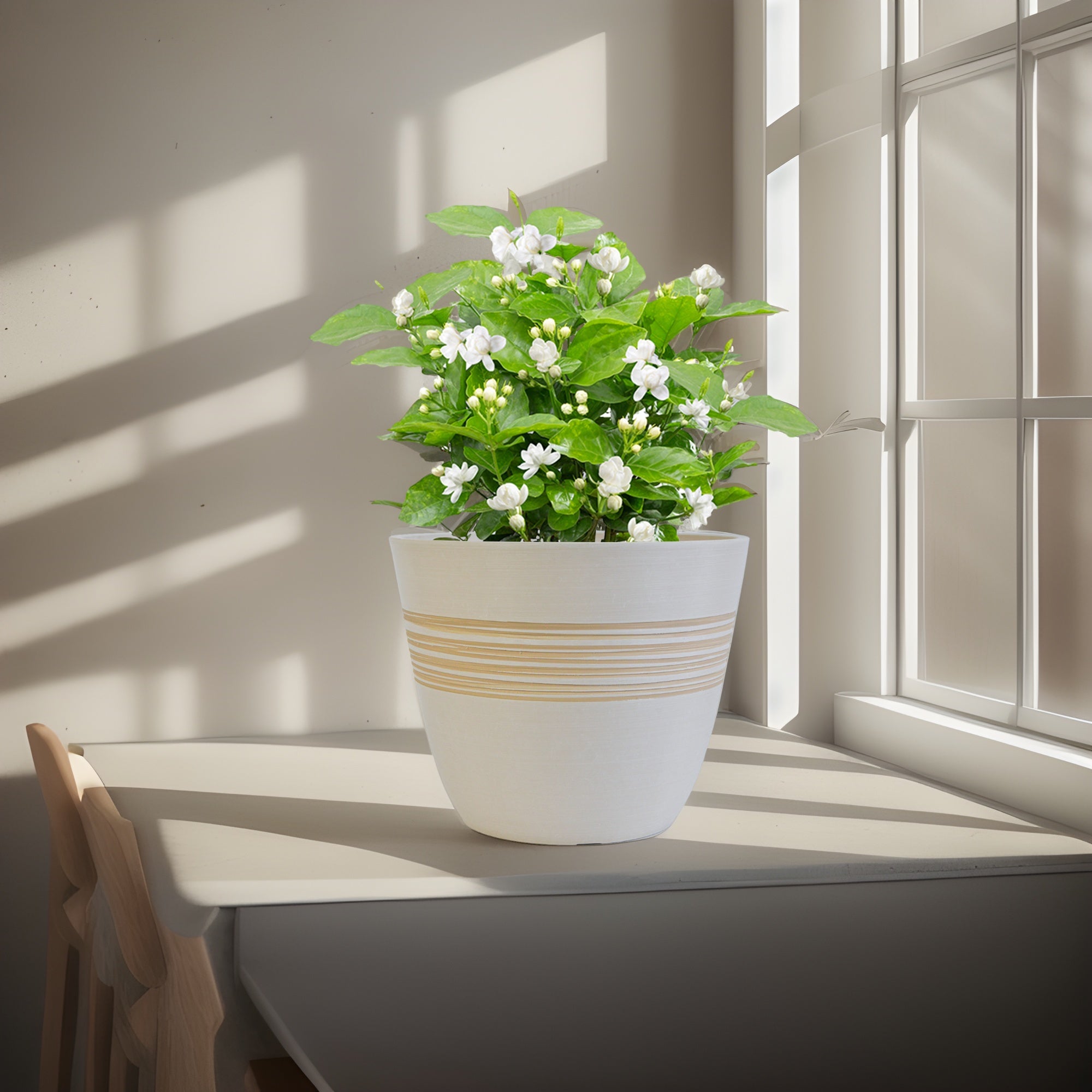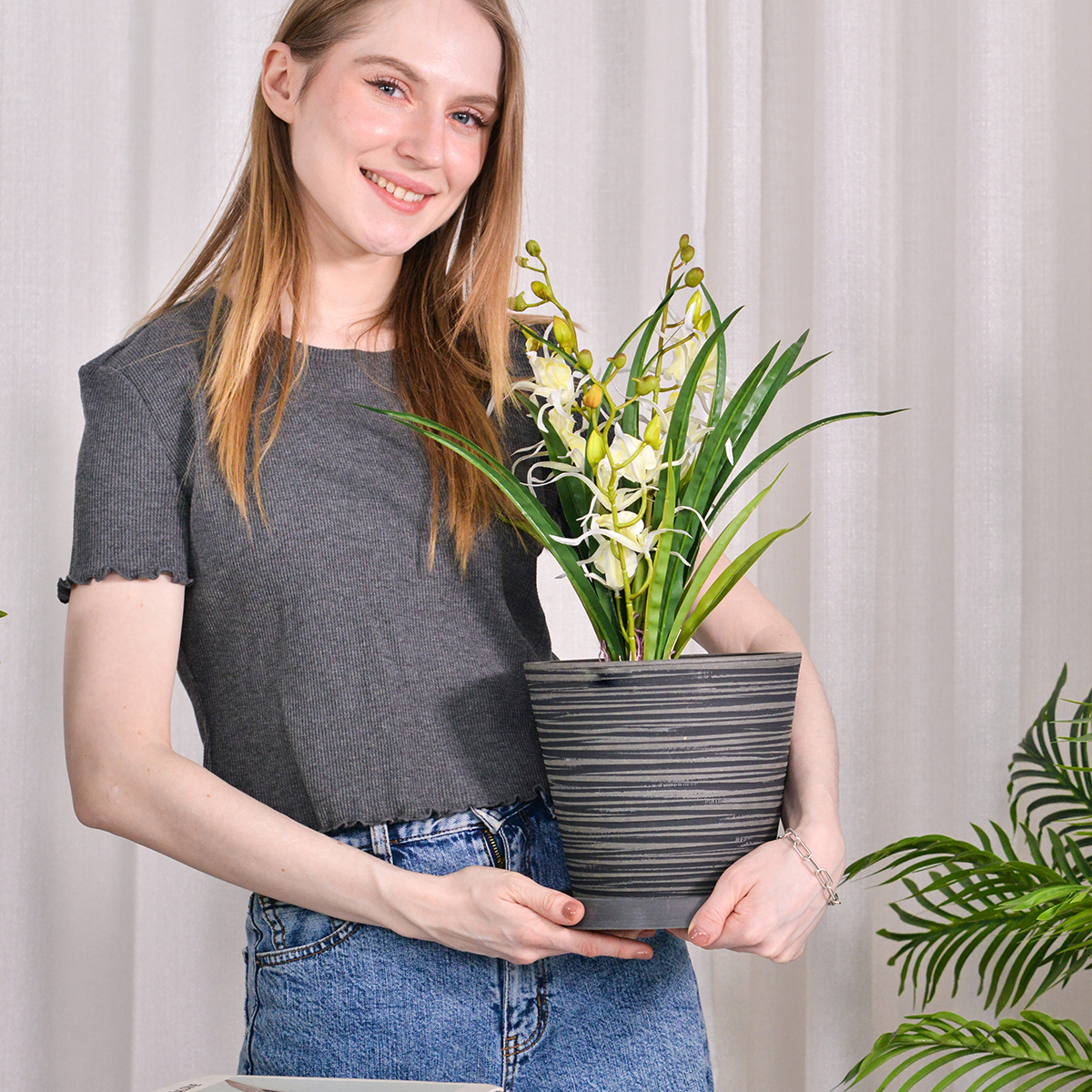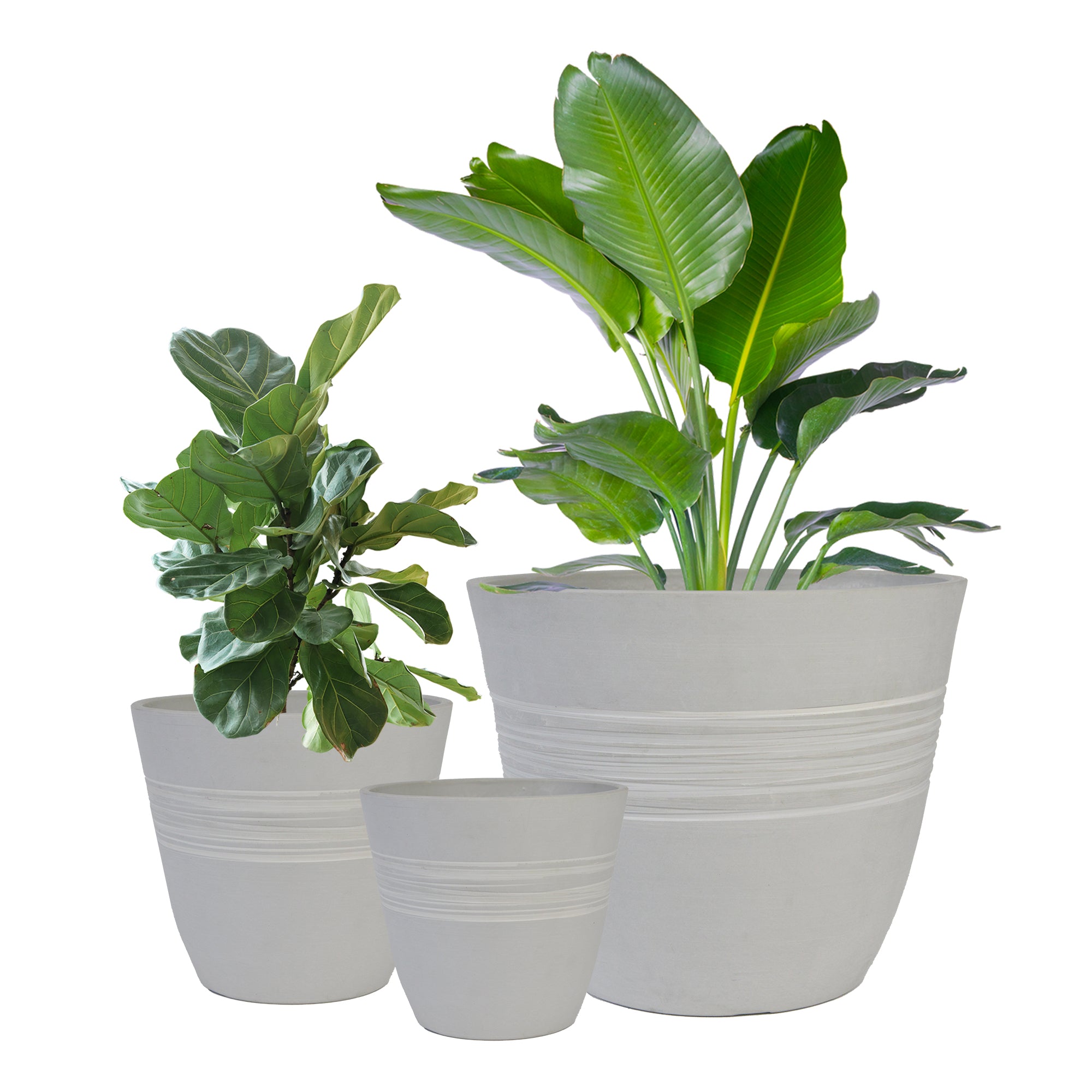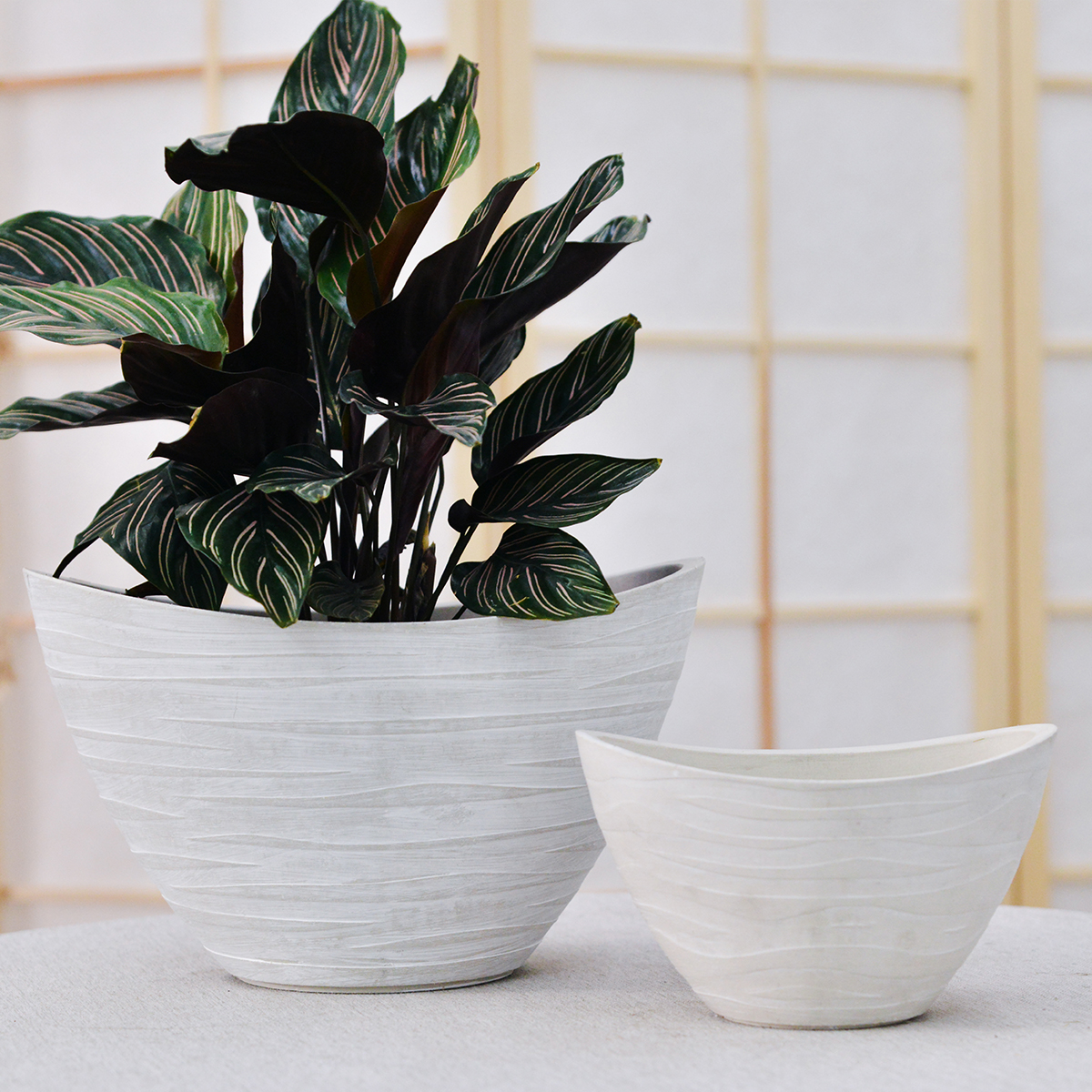Mulberries in Pots: The Complete Guide to Growing Delicious Fruit Outdoors in Containers
Want to harvest your own sweet, juicy mulberries right from your patio, balcony, or garden? Growing mulberry trees in containers is a surprisingly feasible and rewarding way to cultivate these delicious fruits, even in urban environments or limited spaces. Celebrated for their flavorful, berry-like fruit, attractive foliage, and relatively adaptable nature, mulberry trees can be successfully grown in containers, bringing a touch of homegrown goodness and unique fruit to your outdoor living spaces. This comprehensive guide will provide you with everything you need to know to grow mulberry trees successfully in outdoor pots, from selecting the best varieties and containers to mastering essential care techniques for a delightful harvest of homegrown mulberries.
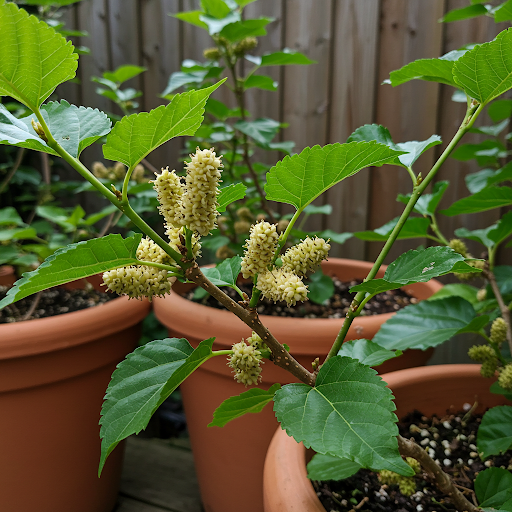
mulberry trees
What are Mulberries?
Mulberries are fruits from trees of the genus Morus in the family Moraceae. They are deciduous trees or shrubs, widely cultivated for their edible, berry-like fruit. Native to various temperate and subtropical regions of the world, mulberries are popular fruit trees grown for their delicious, sweet-tart fruits, ornamental foliage, and relatively easy care. Mulberry trees are characterized by their variable growth habits (from shrubby to large trees), lobed or unlobed leaves, insignificant flowers (mulberries are known for fruit, not showy flowers), and elongated, compound fruits that resemble blackberries. Mulberry fruits come in various colors depending on the species and variety, including white, pink, red, purple, and black. They exhibit a deciduous, tree or shrub-like growth habit, typically reaching sizes from dwarf shrubs to large trees (depending on variety and pruning), but can be maintained at manageable sizes in containers, especially with dwarf varieties. They are known for their sweet-tart, flavorful fruits, adaptability to various conditions, and relatively low maintenance, making them a valued addition to home gardens and containers, especially for fresh eating, jams, pies, and preserves.
Are Mulberries Good for Outdoor Pots?
Yes, certain types of mulberry trees are well-suited for outdoor pots and container gardening, particularly dwarf and smaller varieties. Growing mulberry trees in containers offers several advantages for home gardeners:
- Space Saving: Ideal for patios, balconies, and small gardens where space for large, full-sized trees is limited.
- Portability: Potted mulberry trees can be moved to optimal locations for sunlight, shelter from harsh weather, or even indoors in colder climates if needed (though mulberries are generally cold-hardy).
- Soil Control: You can provide the ideal well-draining, fertile soil mix that mulberries prefer, regardless of your native garden soil.
- Control of Invasive Roots: Some mulberry species can have vigorous root systems. Container growing helps contain roots and prevent them from spreading invasively.
- Easier Netting for Bird Protection: Netting to protect the fruit from birds is easier to manage on a smaller, container-grown tree.
- Ornamental Value: Mulberry trees in pots can be pruned to attractive shapes, adding beauty with their foliage and fruit to patios and outdoor spaces.
However, there are considerations:
- Variety Selection is Key: Not all mulberry varieties are suitable for containers. Dwarf and smaller varieties are essential for manageable size and fruit production in pots. Large, standard-sized mulberry trees are generally too vigorous for container growing.
- Pot Size: Mulberries need large, sturdy pots to accommodate their root systems and provide stability for the tree as it grows.
- Watering and Fertilizing: Potted mulberries will require more consistent watering and fertilization than trees grown in the ground.
- Pruning: Regular pruning is necessary to maintain a manageable size and shape for container-grown mulberries.
- Lifespan: Container-grown fruit trees may have a slightly shorter lifespan than those in the ground, and may require more frequent repotting or root pruning over time.
- Chill Hours: Consider the chill hour requirements of the chosen variety in relation to your local climate. Singapore’s climate is warm and may not provide sufficient chill hours for all mulberry varieties. Choose low-chill varieties if you are in a warm climate.
Ideal Growing Conditions for Mulberries in Pots:
Types of Mulberries for Pots: The most important factor for successful container growing is selecting the right mulberry variety:
- Dwarf Mulberry Varieties: Look for varieties specifically labeled “dwarf” or “patio mulberry.” These are naturally smaller and more compact, making them ideal for containers. Popular dwarf mulberry varieties include ‘ Dwarf Everbearing Mulberry’, ‘ Issai Mulberry’ (semi-dwarf to dwarf, often listed as dwarf), ‘ Weeping Dwarf Mulberry’ (ornamental weeping form, may produce some fruit). ‘ Gerardi Dwarf Mulberry’ is sometimes listed as dwarf but may still become quite large for a container over time. True dwarf varieties are best for long-term container success.
- Semi-Dwarf Mulberry Varieties (with Pruning): Some semi-dwarf varieties can be managed in very large containers with regular pruning. ‘ Illinois Everbearing’ (vigorous semi-dwarf, needs large container and pruning), ‘ Pakistan Mulberry’ (long fruit, needs warm climate, can be kept smaller with pruning). However, true dwarf varieties are generally easier to manage in pots long-term.
- Everbearing vs. Once-Bearing: Most home gardeners prefer everbearing mulberry varieties for containers, as they produce fruit over a longer season, rather than a single, concentrated harvest. ‘ Dwarf Everbearing’, ‘ Issai’, ‘ Illinois Everbearing’, ‘ Pakistan’ are generally everbearing or have a long fruiting season.
- Fruit Color and Flavor: Mulberry fruit color ranges from white to black, with red and purple in between. Flavor varies from sweet to tart. Black mulberries (Morus nigra) are often considered the most flavorful, with a rich, intense sweet-tart taste, but may be less cold-hardy. Red mulberries (Morus rubra) are native to North America and are more cold-hardy, with a tart-sweet flavor. White mulberries (Morus alba) are often sweeter and less acidic, and are very adaptable. Consider your flavor preferences when selecting a variety.
Chill Hours: Mulberries generally have low to moderate chill hour requirements compared to some other fruit trees like cherries or apples. Most common mulberry varieties require 200-800 chill hours (hours below 45°F or 7°C). Singapore’s climate may provide insufficient chill hours for some mulberry varieties, especially those with higher chill hour needs. However, many mulberry varieties, particularly white mulberries (Morus alba) and hybrids like ‘ Illinois Everbearing’ are known to be relatively low-chill and can fruit even in warmer climates with mild winters. ‘ Pakistan Mulberry’ is specifically known for its low chill needs and suitability for warm climates. ‘ Issai’ and ‘ Dwarf Everbearing’ are also considered low-chill. For Singapore’s climate, prioritize selecting low-chill mulberry varieties such as ‘ Pakistan Mulberry’, ‘ Issai Mulberry’, ‘ Dwarf Everbearing Mulberry’, or other Morus alba or hybrid types known for low chill requirements. Consult with local nurseries in Singapore that specialize in fruit trees for warm climates to inquire about suitable low-chill mulberry varieties that are proven to fruit well in your region.
Light: Mulberries need full sun. They require at least 6-8 hours of direct sunlight per day to produce abundant fruit and ripen properly. Choose a sunny location for your mulberry containers, such as a south-facing patio, balcony, or garden roof. In partial shade, mulberry trees will produce less fruit, and the fruit may be less sweet. Full sun is essential for optimal fruit production, sweetness, and tree health.
Soil: Mulberries are adaptable to a range of soil types, but they prefer well-draining soil that is fertile and slightly acidic to neutral. Use a high-quality potting mix specifically formulated for fruit trees or a mix of potting mix, compost, and topsoil (avoid heavy garden soil). Amend potting mix with compost, aged manure, or other organic matter to improve fertility and drainage. Mulberries prefer slightly acidic to neutral soil with a pH between 6.0 and 7.0. Excellent drainage is important, especially in containers, to prevent root rot. Ensure the potting mix is well-draining and avoid waterlogged conditions.
Watering: Mulberry trees prefer consistent moisture, especially when young and during fruit development. Water deeply when the top few inches of soil feel slightly dry. Water thoroughly until water drains out of the drainage holes. Keep the soil consistently moist, but not soggy. Allow the soil surface to dry slightly between waterings, but avoid letting the soil dry out completely, especially during hot weather or when trees are fruiting. Drought stress can lead to fruit drop and reduced fruit size. However, also avoid overwatering and constantly soggy soil, which can lead to root rot. Mulberries prefer a “moist but well-drained” soil environment. Watering frequency will depend on weather conditions, light levels, pot size, and tree size. During hot, dry, and windy weather, you may need to water more frequently, possibly daily for smaller pots in full sun. Check soil moisture regularly and adjust watering accordingly. Water at the base of the tree, avoiding wetting foliage excessively to minimize fungal diseases.
Temperature: Mulberries are generally adaptable to a wide range of temperatures, depending on the species. White mulberries (Morus alba) are very cold-hardy, while black mulberries (Morus nigra) are less so, and Pakistan mulberries are suited for warmer climates. They perform best in warm temperatures during the growing season for fruit ripening. Mulberries are generally cold-hardy to USDA zones 5-9 or even colder for some varieties (white mulberries are very cold-hardy). However, container-grown trees may need some root protection in very cold winter zones (see “Winter Care” below). Hot temperatures are generally well-tolerated, and mulberries fruit best in warm, sunny conditions. For Singapore’s consistently warm climate, heat tolerance is not a concern, but ensuring sufficient sunlight and choosing low-chill varieties are more important considerations.
Fertilizer: Mulberry trees benefit from regular fertilization, especially when grown in pots, to provide the nutrients needed for growth and fruit production. Fertilize in early spring as new growth emerges, and again lightly after fruit set to support fruit development. Use a balanced fertilizer (e.g., 10-10-10 or 12-12-12) or a fertilizer specifically formulated for fruit trees or berries. Follow product label instructions for application rates, and avoid over-fertilizing. For containers, slow-release granular fertilizers incorporated into the potting mix in spring, supplemented with occasional liquid feeding during the growing season, can be effective. Mature mulberry trees are not heavy feeders, so moderate fertilization is usually sufficient.
Choosing the Right Pots for Mulberry Trees:
Suitable Pot Types: Use large, sturdy pots made of durable materials that can support the weight of a growing mulberry tree and withstand outdoor conditions. Suitable pot types include:
- Large Plastic Pots: Lightweight, durable, inexpensive, and available in very large sizes. Practical and cost-effective choice for large mulberry trees in containers. Choose heavy-duty, UV-resistant plastic pots with drainage holes. Dark colors can absorb heat in sunny locations.
- Resin Pots: Lightweight, durable, available in various styles mimicking terracotta or ceramic, and often more decorative than plastic. Good alternative to heavy ceramic or terracotta, and offer good durability for large pots.
- Heavy-Duty Grow Bags: Fabric grow bags in very large sizes (20-30+ gallons or larger) can be used for mulberry trees, especially for dwarf varieties. They offer excellent drainage and aeration, are lightweight, and relatively inexpensive. However, they may be less aesthetically pleasing than traditional pots and may dry out more quickly.
- Large Terracotta or Ceramic Pots: Aesthetically pleasing and classic, but can be very heavy, expensive, and may be prone to cracking in freezing temperatures (terracotta). Glazed ceramic pots are less porous and retain moisture better than terracotta. Ensure excellent drainage and choose very large, sturdy pots if using terracotta or ceramic. Weight can be a significant factor when moving large terracotta or ceramic pots.
Drainage: Excellent drainage is absolutely critical for mulberry trees in pots to prevent root rot. Ensure your chosen pot has multiple drainage holes at the bottom. Avoid pots without adequate drainage. Adding a generous layer of gravel or pot shards at the base of the pot is highly recommended to improve drainage. Elevating pots slightly on pot feet or bricks can further improve drainage and air circulation.
Pot Size: Start with a pot that is appropriately sized for the young tree you are planting, and be prepared to repot or root prune as the tree grows over the years. For dwarf and semi-dwarf mulberry trees, start with at least a 15-20 gallon pot initially, and eventually move to a 25-30+ gallon pot or larger as the tree matures. Larger pots are generally better to provide ample root space, stability, moisture retention, and allow for more extended growth before repotting is needed.
- Initial Pot Size (Young Dwarf/Semi-Dwarf Tree): 15-20 gallons (approximately 18-24 inches in diameter and depth).
- Mature Pot Size (Dwarf/Semi-Dwarf Tree): 25-30+ gallons or larger (approximately 24-30+ inches in diameter and depth or larger).
- Very Dwarf Patio Mulberries: May be manageable in slightly smaller pots (e.g., 10-15 gallons), but larger is still generally recommended for long-term growth and fruiting.
Color and Style: Choose pot colors and styles that complement your mulberry tree and your outdoor décor. Neutral colors like terracotta, gray, brown, or dark green often work well, allowing the tree’s foliage and fruit to be the focal point. Simple, classic pot styles are generally best for fruit trees, emphasizing their natural form and beauty. Consider the overall style of your patio or garden and choose pots that harmonize with the surroundings. Ensure the pot is sturdy and stable enough to support the mature tree, especially in windy locations.
Essential Care Tips for Thriving Mulberry Trees in Outdoor Pots:
- Watering: “Water Deeply When Top Inches of Soil are Slightly Dry, Ensure Excellent Drainage”. Water deeply and regularly, especially during dry periods and fruit development. Water when the top few inches of soil feel slightly dry. Ensure excellent drainage and avoid soggy soil. Consistent moisture is important, but overwatering is detrimental.
- Sunlight: Provide Full Sun (6-8+ Hours Daily). Place mulberry containers in a location that receives full sun for optimal growth, flowering, and fruit production.
- Fertilizing: Fertilize in Early Spring and After Fruit Set. Use Balanced Fruit Tree Fertilizer. Fertilize in early spring as new growth begins and again lightly after fruit set. Use a balanced fertilizer formulated for fruit trees or berries. Follow label instructions and avoid over-fertilizing.
- Pruning: Annual Pruning in Late Winter/Early Spring. Prune annually in late winter or early spring to maintain tree shape, remove dead or crossing branches, control size, and encourage fruit production on new growth. Mulberries fruit on new wood, so light to moderate annual pruning is beneficial. Research proper mulberry tree pruning techniques.
- Pest and Disease Control: Mulberry trees are generally relatively pest and disease-resistant. Monitor for occasional pests like spider mites, aphids, and scale, or diseases like leaf spot or powdery mildew, especially in humid conditions. Use organic pest and disease control methods if needed, such as insecticidal soap, horticultural oil, neem oil, or copper fungicides. Good air circulation and proper watering practices help prevent many issues. Bird netting is often necessary to protect ripening mulberries from birds, as birds are very attracted to the fruit.
- Repotting or Root Pruning (Every 2-3 Years): Container-grown mulberry trees will eventually become root-bound. Every 2-3 years, in late winter or early spring, repot the tree into a slightly larger container with fresh potting mix, or root prune to maintain size and vigor. Root pruning involves carefully removing the tree from the pot, pruning back about 1/3 of the root mass, and replanting it in the same pot with fresh potting mix.
- Winter Care (Colder Climates): In USDA zones 5-7, potted mulberry trees benefit from winter protection for the roots. In fall, after leaves have dropped, protect pots from freezing temperatures by moving them to an unheated garage, shed, or sheltered location. Insulate pots by wrapping them with burlap, blankets, or bubble wrap. Water pots occasionally during winter dormancy to prevent soil from completely drying out, but do not keep them soggy. In early spring, after frost danger has passed, gradually move pots back outdoors to a sunny location. In milder zones (zones 8-9), winter protection may be less critical, but protecting roots from hard freezes is still recommended.
- Chill Hour Considerations (Warm Climates like Singapore): If you are in a warm climate like Singapore with potentially insufficient chill hours for some mulberry varieties, carefully select low-chill mulberry varieties such as ‘ Pakistan Mulberry’, ‘ Issai Mulberry’, ‘ Dwarf Everbearing Mulberry’, or other Morus alba or hybrid types known to fruit well in warm climates. Consult with local nurseries in Singapore specializing in fruit trees for warm climates to confirm suitable low-chill mulberry varieties for your region. Monitor your tree for fruit production, and be aware that some varieties may fruit less reliably or produce smaller crops in very warm, low-chill climates compared to their performance in regions with more distinct winters.
Popular Mulberry Cultivars for Pots (Dwarf & Container-Friendly):
- Dwarf Everbearing Mulberry: ( Morus nigra hybrid) – True dwarf variety, compact growth (4-8 ft), everbearing black fruit, good flavor, relatively low chill needs. Excellent for containers.
- Issai Mulberry: ( Morus bombycis x alba) – Semi-dwarf to dwarf (can be pruned to stay smaller), everbearing black fruit, sweet flavor, very productive, low chill needs. Very popular for home gardens and containers.
- Pakistan Mulberry: ( Morus macroura) – Long, slender, reddish-purple fruit, very sweet, heat-tolerant, low chill needs, vigorous grower but can be pruned, best for warm climates. May need a larger container and more pruning.
- Weeping Dwarf Mulberry: ( Morus alba ‘Pendula Nana’) – Ornamental weeping form, very dwarf (2-4 ft), may produce some white fruit, primarily grown for its weeping habit and small size. Good for ornamental containers, fruit production is secondary.
- Illinois Everbearing Mulberry: ( Morus alba x rubra) – Semi-dwarf (can reach 15-25 ft if unpruned, but manageable with pruning in a large container), everbearing black fruit, good flavor, adaptable, more cold-hardy than Pakistan. Needs a larger container and regular pruning to maintain size.
In Summary:
Growing mulberry trees in outdoor pots, especially dwarf and smaller varieties, is a rewarding way to enjoy fresh, homegrown mulberries even in limited spaces. While successful container cultivation requires careful variety selection (particularly low-chill varieties for warm climates like Singapore), appropriate pot size, well-draining soil, consistent watering and fertilizing, and regular pruning, the effort is repaid with delicious, unique fruit and attractive trees for your patio or balcony. By choosing a dwarf or container-friendly variety, providing full sun, a large pot with excellent drainage, and following essential care practices, you can cultivate thriving mulberry trees in pots and enjoy the sweet-tart taste of homegrown mulberries each season, right in your outdoor living space. For gardeners in warm, low-chill climates like Singapore, selecting low-chill varieties is crucial for success. Consider ‘Pakistan Mulberry’, ‘Issai Mulberry’, or ‘Dwarf Everbearing Mulberry’ and consult with local nurseries for best recommendations for your region.
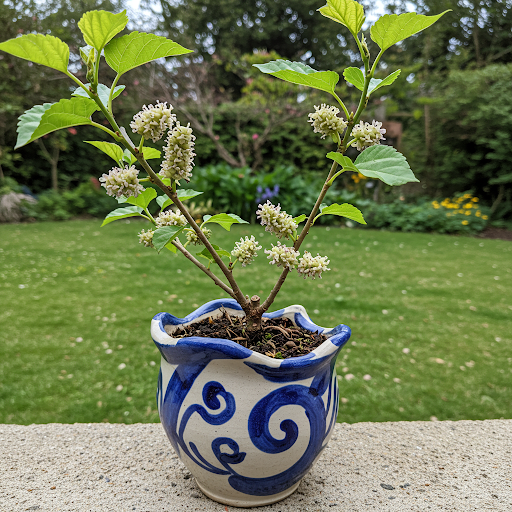
mulberry trees
For more detailed botanical information and to explore the diverse world of Morus (mulberries), you can visit the Wikipedia page on Mulberry.
Important Note: Mulberry fruits are a healthy and delicious treat, rich in vitamins, antioxidants, and unique phytonutrients. Growing your own mulberries, even in pots, can bring the satisfaction of harvesting fresh fruit from your own tree and enjoying the beauty and shade of these versatile trees in your outdoor spaces. With careful planning, variety selection appropriate for your climate, and attention to their specific needs, you can experience the rewarding experience of growing mulberries in containers and enjoy their delicious fruit for years to come.
Planter for Indoor Outdoor Plants, Set of 2 Modern Decorative Plant Pots with Drainage Hole, Decorative Flower Pots
By greenship-seo|2025-04-10T07:46:01+00:00January 9, 2025|Categories: Hand-carving Series|Tags: Decorative Flower Pots, Self-Watering Pots|
K2-11T
By greenship|2024-08-13T04:21:25+00:00August 13, 2024|Categories: Hand-carving Series|
11V
By greenship|2024-08-13T03:05:48+00:00August 13, 2024|Categories: Hand-carving Series|
Plant Pots 6 inch 8 inch 12 inch for Indoor Outdoor Plants, Set of 3 Modern Decorative Planter with Drainage Hole, Decorative Flower Pots
By greenship-seo|2025-04-10T06:38:40+00:00January 16, 2025|Categories: Hand-carving Series|Tags: Decorative Flower Pots|
KC2-11V
By greenship|2024-08-16T05:39:50+00:00August 16, 2024|Categories: Hand-carving Series|
20YB
By greenship|2024-08-16T05:37:57+00:00August 16, 2024|Categories: Hand-carving Series|

